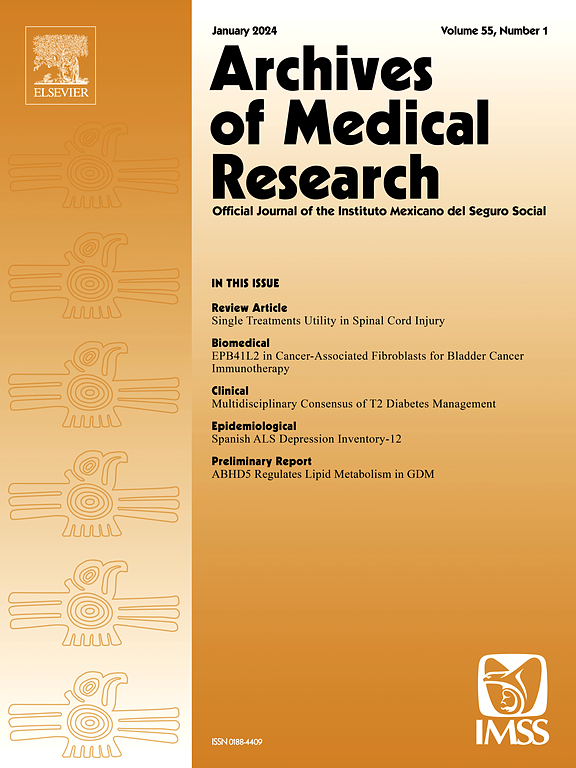揭示2型糖尿病纵向体重动态:来自综合护理计划的见解
IF 3.4
3区 医学
Q1 MEDICINE, RESEARCH & EXPERIMENTAL
引用次数: 0
摘要
背景和目的超重和肥胖是导致包括2型糖尿病(T2D)在内的重大健康问题的普遍状况。适度减肥可以改善代谢控制和心血管风险。我们的目的是确定在多学科干预后经历体重变化的T2D患者的人口学和临床特征。方法对622例患者进行完整的3年随访资料分析。纳入标准为糖尿病诊断后不到5年,无致残性慢性并发症。描述性统计、方差分析或Kruskal-Wallis检验用于组间比较,logistic回归用于确定体重变化的预测因子。结果女性占56.2%,平均年龄(55.8±10.5)岁。53%的人超重,47%的人肥胖。3年后,35.5%的人体重减轻,33.9%的人保持体重,30.5%的人体重增加;16.6%达到正常体重。体重增加的患者比体重减轻或保持不变的患者更年轻(60岁对61岁,p = 0.04)。较高的基线HbA1c (OR 1.14, 95% CI 1.03-1.26, p = 0.008)和较低的3个月生活质量(OR 1.48, 95% CI 0.95-2.28, p = 0.07)与体重增加有关。较高的基线BMI (OR 0.90, 95% CI 0.85-0.95, p < 0.001)、较长的糖尿病病程(OR 0.81, 95% CI 0.70-0.94, p = 0.005)和iSGLT2治疗与体重减轻有关。结论3年后只有16%的患者体重恢复正常,35.5%的患者体重减轻,33.9%的患者体重保持不变,30.5%的患者体重增加。确定体重变化的预测因素可以指导有针对性的糖尿病治疗干预。本文章由计算机程序翻译,如有差异,请以英文原文为准。
Unveiling Longitudinal Weight Dynamics in Type 2 Diabetes: Insights From a Comprehensive Care Program
Background and Aims
Overweight and obesity are prevalent conditions that contribute to significant health problems, including type two diabetes (T2D). Moderate weight loss improves metabolic control and cardiovascular risk. We aimed to identify the demographic and clinical characteristics of patients with T2D who experienced weight changes after a multidisciplinary intervention.
Methods
We analyzed 622 patients with complete 3-year follow-up information. Inclusion criteria were less than 5-years since diabetes diagnosis and an absence of disabling chronic complications. Descriptive statistics, ANOVA or Kruskal-Wallis tests were used for group comparisons, and logistic regression to identify predictors of weight change.
Results
Participants were 56.2 % women, with an average age of 55.8 ± 10.5 years. 53 % were overweight and 47 % were obese at baseline. At 3-years, 35.5 % lost weight, 33.9 % maintained weight, and 30.5 % gained weight; 16.6 % achieved a normal weight. Patients who gained weight were younger than those who lost or maintained it (60 vs. 61 years, p = 0.04). Higher baseline HbA1c (OR 1.14, 95 % CI 1.03–1.26, p = 0.008) and lower quality of life at three months (OR 1.48, 95 % CI 0.95–2.28, p = 0.07) were associated with weight gain. Higher baseline BMI (OR 0.90, 95 % CI 0.85–0.95, p < 0.001), longer diabetes duration (OR 0.81, 95 % CI 0.70–0.94, p = 0.005), and iSGLT2 treatment were linked to weight loss.
Conclusion
Only 16 % of patients achieved normal weight after 3-years: 35.5 % lost weight, 33.9 % maintained their weight, and 30.5 % gained weight. Identifying predictors of weight change may guide targeted interventions in diabetes care.
求助全文
通过发布文献求助,成功后即可免费获取论文全文。
去求助
来源期刊

Archives of Medical Research
医学-医学:研究与实验
CiteScore
12.50
自引率
0.00%
发文量
84
审稿时长
28 days
期刊介绍:
Archives of Medical Research serves as a platform for publishing original peer-reviewed medical research, aiming to bridge gaps created by medical specialization. The journal covers three main categories - biomedical, clinical, and epidemiological contributions, along with review articles and preliminary communications. With an international scope, it presents the study of diseases from diverse perspectives, offering the medical community original investigations ranging from molecular biology to clinical epidemiology in a single publication.
 求助内容:
求助内容: 应助结果提醒方式:
应助结果提醒方式:


